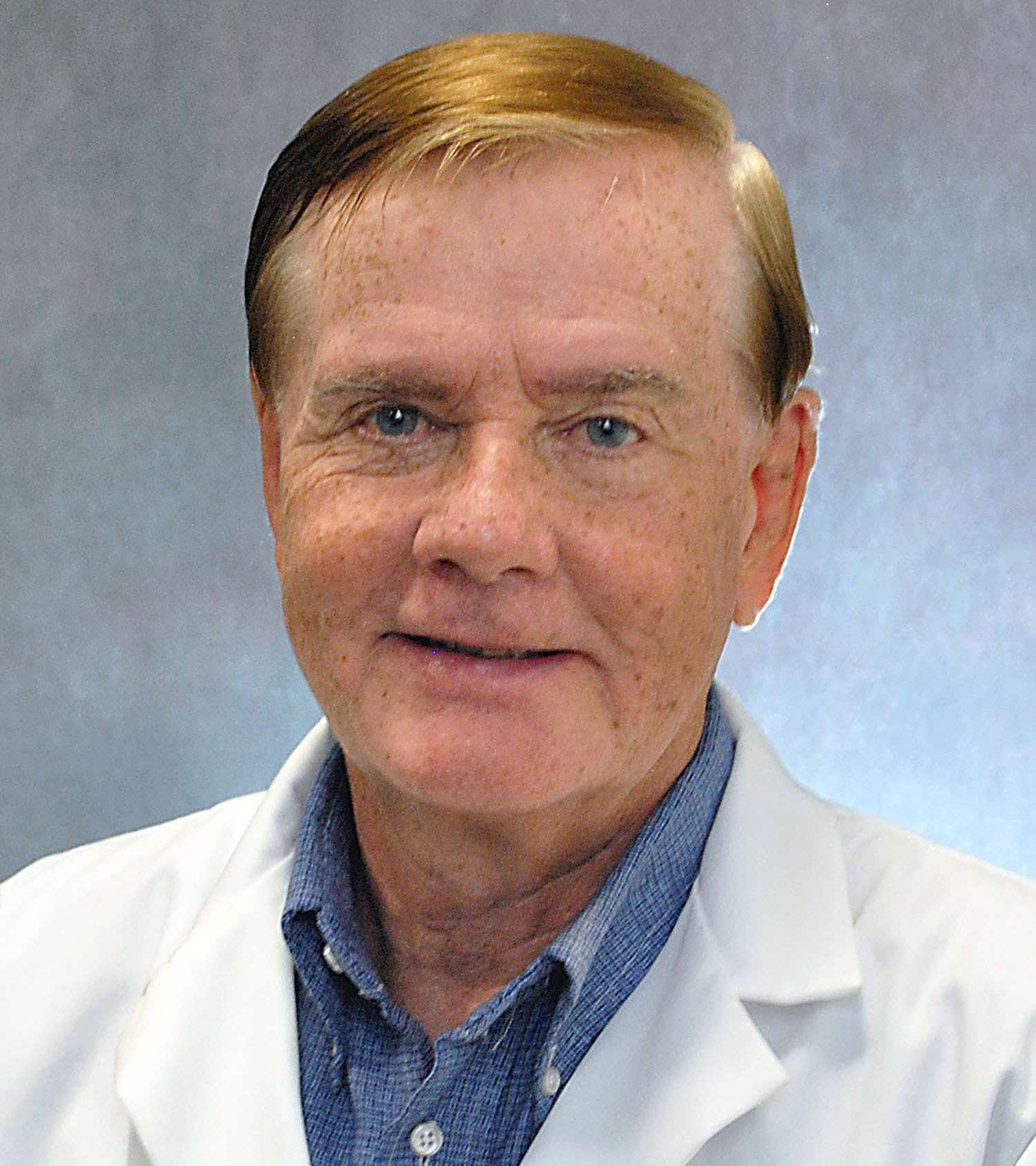
David Stowe, MD, PhD
Professor
Contact Information
Education
BA, Zoology, Indiana University - Bloomington, IN, 1968
MA, Cell Biology, Indiana University - Bloomington, IN, 1970
PhD, Physiology, Michigan State University - East Lansing, MI, 1974
Postdoc, Cardiac Physiology, University of California - San Francisco, CA, 1974–1976
MD, Medical College of Wisconsin - Milwaukee, WI, 1979-1983
Residency, Anesthesiology, Medical College of Wisconsin - Milwaukee, WI, 1983–1987
Research Interests
- Mechanisms for and protection against cardiac ischemia-reperfusion injury
- Identification and function of mitochondrial ion channels and ion exchangers
- Assessment of mitochondrial transmembrane calcium fluxes and sequestration
- Mitochondrial protection against subacute liver ischemia and traumatic brain injury
Publications
-
(Slick RA, Tinklenberg JA, Sutton J, Zhang L, Meng H, Beatka MJ, Vanden Avond M, Prom MJ, Ott E, Montanaro F, Heisner J, Toro R, Granzier H, Geurts AM, Stowe DF, Hill RB, Lawlor MW.) Am J Pathol. 2023 Oct;193(10):1528-1547 PMID: 37422147 PMCID: PMC10548278 SCOPUS ID: 2-s2.0-85171390420 07/09/2023
-
(Tinklenberg JA, Slick RA, Sutton J, Zhang L, Meng H, Beatka MJ, Vanden Avond M, Prom MJ, Ott E, Montanaro F, Heisner J, Toro R, Hardeman EC, Geurts AM, Stowe DF, Hill RB, Lawlor MW.) Am J Pathol. 2023 Oct;193(10):1548-1567 PMID: 37419385 PMCID: PMC10548277 SCOPUS ID: 2-s2.0-85171370030 07/08/2023
-
(Kim J, Zimmerman MA, Shin WY, Boettcher BT, Lee JS, Park JI, Ali M, Yang M, Mishra J, Hagen CE, McGraw JE, Mathison A, Woehlck HJ, Lomberk G, Camara AKS, Urrutia RA, Stowe DF, Hong JC.) Ann Surg. 2023 Feb 01;277(2):e366-e375 PMID: 34387201 PMCID: PMC8840998 SCOPUS ID: 2-s2.0-85146161896 08/14/2021
-
(Malas KM, Lambert DS, Heisner JS, Camara AKS, Stowe DF.) Biochim Biophys Acta Bioenerg. 2022 Nov 01;1863(8):148908 PMID: 35961396 SCOPUS ID: 2-s2.0-85136505582 08/13/2022
-
(Sun J, Mishra J, Yang M, Stowe DF, Heisner JS, An J, Kwok WM, Camara AKS.) Oxid Med Cell Longev. 2022;2022:4476448 PMID: 35873800 PMCID: PMC9301761 SCOPUS ID: 2-s2.0-85134907787 07/26/2022
-
(Gerdes HJ, Yang M, Heisner JS, Camara AKS, Stowe DF.) Biochim Biophys Acta Bioenerg. 2020 Dec 01;1861(12):148290 PMID: 32828729 PMCID: PMC7560995 SCOPUS ID: 2-s2.0-85089838074 08/24/2020
-
(Yang M, Sun J, Stowe DF, Tajkhorshid E, Kwok WM, Camara AKS.) Cell Physiol Biochem. 2020 Sep 09;54(5):853-874 PMID: 32901466 PMCID: PMC7898235 SCOPUS ID: 2-s2.0-85090868984 09/10/2020
-
(Riess ML, Elorbany R, Weihrauch D, Stowe DF, Camara AKS.) Cells. 2020 Jan 20;9(1) PMID: 31968546 PMCID: PMC7017211 SCOPUS ID: 2-s2.0-85099486696 01/24/2020
-
Total Matrix Ca2+ Modulates Ca2+ Efflux via the Ca2+/H+ Exchanger in Cardiac Mitochondria.
(Natarajan GK, Glait L, Mishra J, Stowe DF, Camara AKS, Kwok WM.) Front Physiol. 2020;11:510600 PMID: 33041851 PMCID: PMC7526510 10/13/2020
-
(Mishra J, Davani AJ, Natarajan GK, Kwok WM, Stowe DF, Camara AKS.) Cells. 2019 Sep 07;8(9) PMID: 31500337 PMCID: PMC6770067 SCOPUS ID: 2-s2.0-85082240408 09/11/2019
-
Editorial: Genetic Modification of Cardiac Tissue.
(Camara AKS, Stowe DF, O-Uchi J, Bazil JN.) Front Cardiovasc Med. 2019;6:93 PMID: 31380395 PMCID: PMC6646414 08/06/2019
-
(Haumann J, Camara AKS, Gadicherla AK, Navarro CD, Boelens AD, Blomeyer CA, Dash RK, Boswell MR, Kwok WM, Stowe DF.) Front Physiol. 2018;9:1914 PMID: 30804812 PMCID: PMC6378946 02/26/2019
The Stowe laboratory is currently active in several areas:
- Mechanism and timing of activation of cardiac mitochondrial small and large K+-sensitive Ca2+ (SKCa and BKCa) channels; their protective role against acute cardiac injury; identification of specific mitochondrial SKCa splice variants in several species, including human; and the molecular and biophysical mechanisms underlying protection by opening of these mitochondrial channels.
- Mitigation of Ca2+ dysregulation and excess reactive oxygen species emission in acute cardiac injury.
- Regulation of mitochondrial Ca2+ flux through Ca2+ channels and Ca2+ exchangers with H+, K+ and Na+; and exploration of dynamic mitochondrial Ca2+ buffering mechanisms.
- Ischemia-induced nitration of nucleotide transporters VDAC and ANT on promoting mitochondrial and cell damage with identification of specific residues that are causative in impeding nucleotide transport and mitochondrial dysfunction.
- Mitochondrial function in liver cells during the perioperative transplant period.
- Mitochondrial function in glial and neurons after subacute tramatic brain injury.
Collaborators include: AKS Camara, WM Kwok, C Pawela, A Geurts, J Hong, MY Yang, J Mishra, Q Cheng, L Keguo, JS Heisner, D Schwabe, and pre- and post doctoral students.



